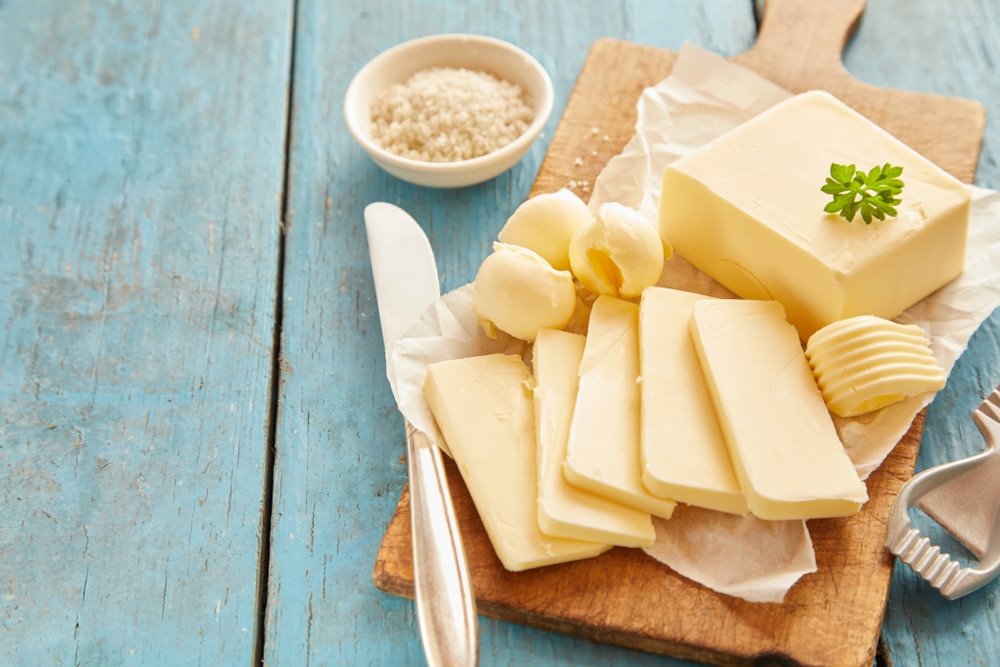
Oleo is a common addition to a variety of recipes – many people don’t know this but oleo is margarine, which is regularly used for flavoring, cooking, and baking. Oleo has been around since 1869 but increased baking has increased its demand. For this reason, the oleo is now made from vegetable oil while the traditional recipe would ask for fat from sheep or cows. On the other hand, it’s still not readily available, which is why people wonder if they can use butter in place of oleo. So, let’s check out the details!
Can You Substitute Butter For Oleo?
Using Butter In Place Of Oleo – Is It Possible?
The short answer is yes, you can use butter to replace oleo and it’s actually the best substitute that you can try. The best thing about using butter is that it’s readily available and tastes amazing in baking recipes as it has a soft texture. However, you need to remember that butter has high cholesterol and saturated fat percentage, which means it’s not very healthy. It is actually recommended that you use butter that’s made from grass-fed cows as such butter will have healthy nutrients like Omega-3 and vitamin K2. You can use a 1:1 substitution ratio while using butter in place of oleo.
Other Substitutes For Oleo
Now that you know that butter can be used in place of oleo, it’s time you head to the grocery store. However, there are some additional substitutes that you can try, such as;
- Cream Cheese
Cream cheese is a perfect choice for people who are looking for an option with low-fat content, making it a healthier alternative. Cream cheese is produced from cream and milk but you can also find dairy-free cream cheese, making it perfect for vegetarians and people following vegan diets. In addition, if your recipe allows, you can also add melted cream cheese to substitute oleo. It makes a great substitute for oleo in sauces, but if you have to use it in baking recipes, you need to remember that cream cheese has a low-fat content, which can impact the recipe’s texture. The culinary experts recommend that you add a bit of almond oil to cream cheese to make sure it replicates the texture of oleo.
- Lard
Lard is produced from animal fats – in particular, it’s made from pig fat. To produce lard, pork’s fatty cut is cooked to separate the liquid fat from the solid part and the liquid part is known as lard. It can be used in various recipes and can be used to replace butter as well as oleo. Fortunately, there are no trans-fats in lard, which means it’s a healthy choice. It’s a great choice for savory dishes as well as pie crusts. In addition, lard is known for a low melting point and boasts a neutral flavor (nope, you don’t have to worry about pork flavor).
- Coconut Oil & Olive Oil
Olive oil is widely used in Italian and Mediterranean cuisines and has an array of health benefits since it has anti-bacterial and anti-inflammatory properties. On the other hand, coconut oil has been used in Asian recipes for years as these areas have an abundance of coconut trees. Olive oil can be used to replace oleo in bread and savory recipes because it has an olive flavor that doesn’t taste very good in desserts. On the other hand, if you are looking for an oleo substitute for sweet recipes, you can opt for coconut oil because it has a neutral flavor. Having said that, you can use a 3:4 substitution ratio while using olive oil, while a 1:1 substitution ratio is recommended for coconut oil (it’s best that you use refined coconut oil).
- Avocado Butter
Avocados are known for their rich and creamy texture and are extremely healthy. Having said that, you can use avocado butter to replace oleo as it’s made from real avocados and is available in a spread form, making it easy to use. This butter can be used for BBQ, baking, pan-frying, sautéing, and roasting. As far as applications are concerned, you can add avocado butter to salad dressings or simply grease the pan. However, it will add a bit of avocado flavor to the recipe, so just keep it in mind!